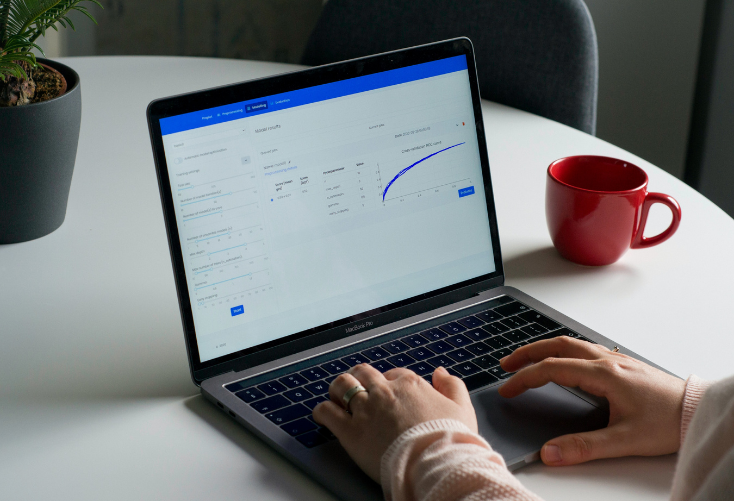Hand selected flexible workspace news from the most reliable sources to keep you ahead of the pack. We find all the latest news, so you don’t have to. Morning and afternoon updates. Stay in the know.
Here’s what you need to know today:
- Technology’s Role In The Future Of Work NEW
- Human Connection Is A Necessity For The Workplace NEW
- Making The Transition To Remote Working NEW
- Returning To The Office In The Future
- How Data Will Shape The New Future Of Work
- Flexibility Is Improving Diversity In The Workplace
Technology’s Role In The Future Of Work
Technology stepped up to the plate as the pandemic hit and businesses everywhere scrambled to strategize their next move.
Since society has made years of progress over the course of nine months, the future of work will be completely redefined.
First, modern applications have led companies to rethink how they approach their operations. More transactions are taking place through cloud-native applications across various industries, and that is expected to become even more of a component in the future.
Edge computing will also become a crucial part of keeping data and cost sensitivity localized.
How we collaborate, whether it be at work, the doctor’s office or with loved ones, has completely been altered. Over the next few years, collaboration tools will evolve to solve new challenges that companies are bound to face.
Healthcare environments, artificial intelligence, machine learning systems and other advanced technologies that track data will also play a significant role in how organizations function.
Using this information and having an understanding of what employees and customers need, businesses will be able to shape their security infrastructure and flexible policies.
Automation will also play a significant role in improving the efficiency of every day tasks, particularly for manufacturing and supply chain control systems.

Human Connection Is A Necessity For The Workplace
Business leaders are preparing to take the next step into figuring out which operational strategies will be the most beneficial in the future.
When making these decisions, leaders must keep in mind what they can do to ensure their employees have the best workplace experience possible, particularly as many have gone through many challenges over the past year.
The Work Trend Index report from People Matters analyzed the productivity patterns in Microsoft Teams since the beginning of this year and surveyed over 6,000 information and frontline workers across various countries.
Some of the most significant findings of the research were that the pandemic led to increased burnout and that one of the biggest issues of remote working was the loss of human connection in the workplace.
In order to reap the benefits of both in-office and at-home working policies, People Matters and Microsoft has created “The Wellbeing Week” to help employees make the most of their work environment.
“This has been a very trying period for our people who have shown the highest commitment levels despite the headwinds of the external environment,” said Kavita Mathur, Head of Human Resources at Trilegal. “Lack of social interactions, confinement, and an increasing workload, all this has taken a toll on individuals both physically and emotionally.”
In order to help TriLegal’s employees stay engaged throughout the pandemic, the law firm offered mindfulness workshops, as well as access to counselors if they are struggling mentally.
Overall, one of the biggest lessons learned over the last nine months is how critical interactions with colleagues can be, especially during these trying times.

Making The Transition To Remote Working
Companies who were once adamantly against remote working have come to realize its benefits.
However, there can still be challenges when transitioning to a remote working arrangement. That is why it is up to employers and employees to take the steps necessary to ensure that they are as productive and satisfied with their remote working environment.
First, dedicating a space that is solely for work is essential. If you live in a small apartment with roommates, this may be trickier.
Identifying which factors help you maintain productivity levels can help with this issue. For instance, think about where you normally do your best work and why that is. Whether its cleanliness or natural lighting, you might find either your home or a dedicated workspace could be the best option for your workstyle.
“Even if you’re working at your kitchen table because it’s your only option,” said Sara Sutton, CEO of FlexJobs. “I try to put little touchstones of things that help get me in that mind-set.”
Creating a routine is also an important part of making the transition to working from home. This includes your morning routine, breaks throughout the day and your post work routine. Without setting these rules, you might find yourself increasingly distracted throughout the work day.
What did you do before working remotely? If it was waking up, getting in exercise and eating breakfast, continue to do so.
Additionally, keeping your work space and home space apart from each other so you can unwind at the end of the day and feel rejuvenated for the next work day.

Returning To The Office In The Future
In 2021, we can anticipate that some workers will return to the office for the first time in nearly a year after the pandemic forced millions to work from home.
However, analysis firm CCS Insights is predicting that over half of all office employees will continue to work remotely in 2022. Knowing this, companies have started strategizing how their workspace will look like in the future.
While many are anticipating a spike in remote working positions in the future, traditional offices will still be important to a company’s operations as some employees will want to come back into the workplace.
While some employees will work from home for at least part of the week, others will choose to come into the office. This means firms will need to evaluate their security infrastructure to ensure those who are working from home are not at risk of any cybersecurity attacks.
A report from Forrester has found that the number one priority when reopening office buildings will be creating a mentally and physically safe workspace.
This means reconfiguring the office layout to support distancing and sanitation protocols, as well as offering wellness programs that benefit workers who may be experiencing isolation or stress.
When rethinking how to outfit the physical workplace, businesses should consider investing into touchless and voice assistant technology that can make the office safer and more efficient.
“In particular, I expect to see more offices use smart technology that adjusts the office environment throughout the day to aid employee productivity and wellbeing,” said Richard Kauntze, chief executive of the British Council for Offices.

How Data Will Shape The New Future Of Work
As we begin the next phase of the “new normal”, companies are wondering where the future of work will go from here.
Reliance on technology has never been more essential, and with that comes a change in demand of certain technologies. Moving forward, business decisions will be largely driven by collected data.
Learning how to protect employees and customers has become a priority for most organizations. In attempting to do so, businesses realize the importance of improving their agility, safety and resilience.
Using real-time data to make decisions about how to reconfigure office space and have a better understanding of what employees need will be critical in the next evolution of the workplace.
Additionally, effective planning and execution to boost productivity and optimize revenue will need to be done through automated technology.
If companies are still relying on manual or semi-automated processes, they are at higher risk for error and reduced time efficiency. Data that captures time and productivity will allow companies to develop a deeper insight into what employees need to accomplish their best work.
Collecting data to gain a better understanding of how employees are doing overall will also be essential. Simply asking what hours they are working, how they are feeling and ensuring they are taking the steps to prevent burnout is crucial to a healthy workforce.
This way, management will have a better idea of how employees are working and whether they need guidance to create a better schedule for themselves as they continue to adjust to new ways of operating.

Flexibility Is Improving Diversity In The Workplace
Prior to the pandemic, the future of work seemed like a concept that would be a slow trickle over the next few years.
But now, the workforce has been propelled years into the future and conversations about what to expect from the workplace have evolved, particularly in terms of diversity and inclusion policies.
Research from VMware and Vanson Bourne has revealed that there has been a 41% increase in workers viewing remote working as a requirement rather than a perk.
Now, the “work from anywhere” trend is expected to transform how we view workplace operations. So what does this mean for a more inclusive work environment for employees?
With these flexible policies, working parents no longer have to juggle both childcare and work responsibilities. The lack of daily commutes gives them the chance to take their kids to school and still get their best work done from the comfort of their home.
In fact, 82% of business leaders said that flexibility has made it much easier to recruit working parents.
Additionally, as coming into the physical office every day is no longer a necessity, businesses are able to widen their talent recruitment pool across various geographical regions.
Doing so helps companies diversify their workforce and find talent that can come from untapped markets outside of major economic hubs.
Changing work practices also has had an impact on our interactions with colleagues. In some scenarios, some workers say they feel more empowered or confident to speak up during virtual conference calls.



 Dr. Gleb Tsipursky – The Office Whisperer
Dr. Gleb Tsipursky – The Office Whisperer Nirit Cohen – WorkFutures
Nirit Cohen – WorkFutures Angela Howard – Culture Expert
Angela Howard – Culture Expert Drew Jones – Design & Innovation
Drew Jones – Design & Innovation Jonathan Price – CRE & Flex Expert
Jonathan Price – CRE & Flex Expert












